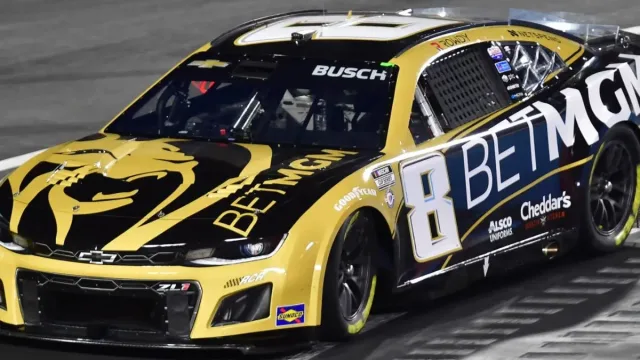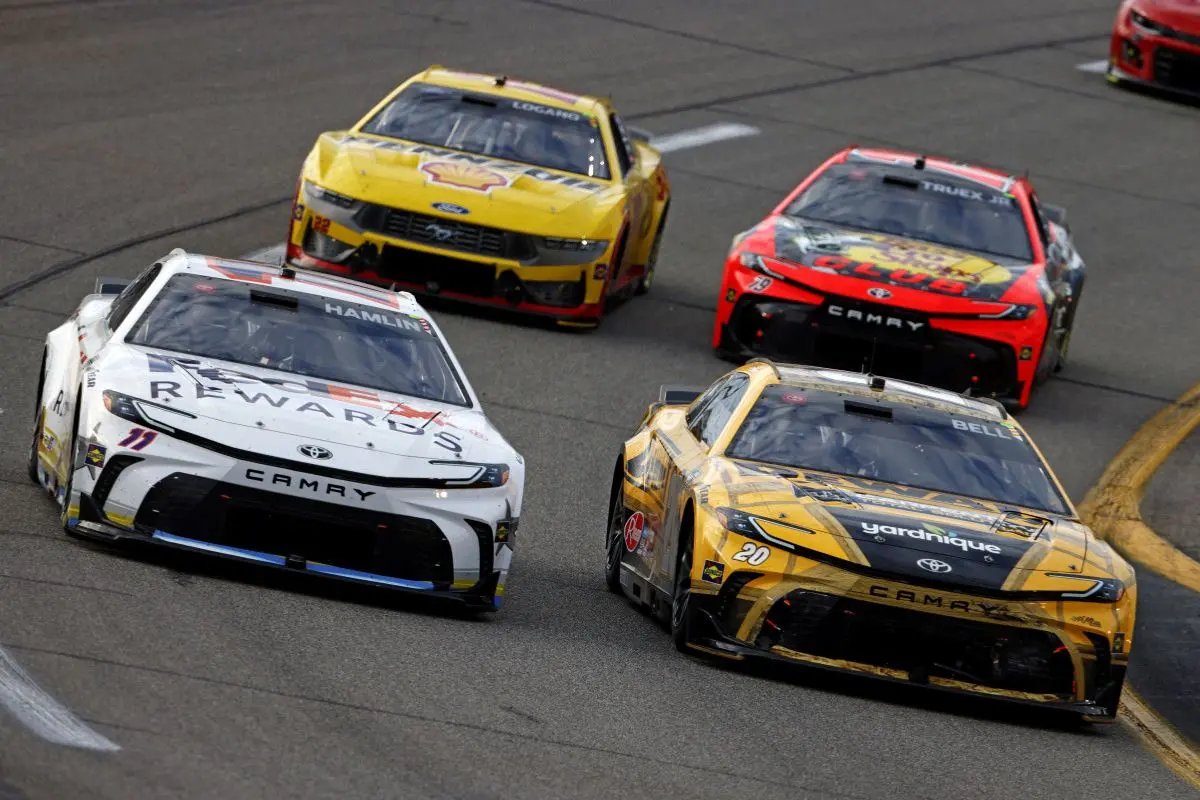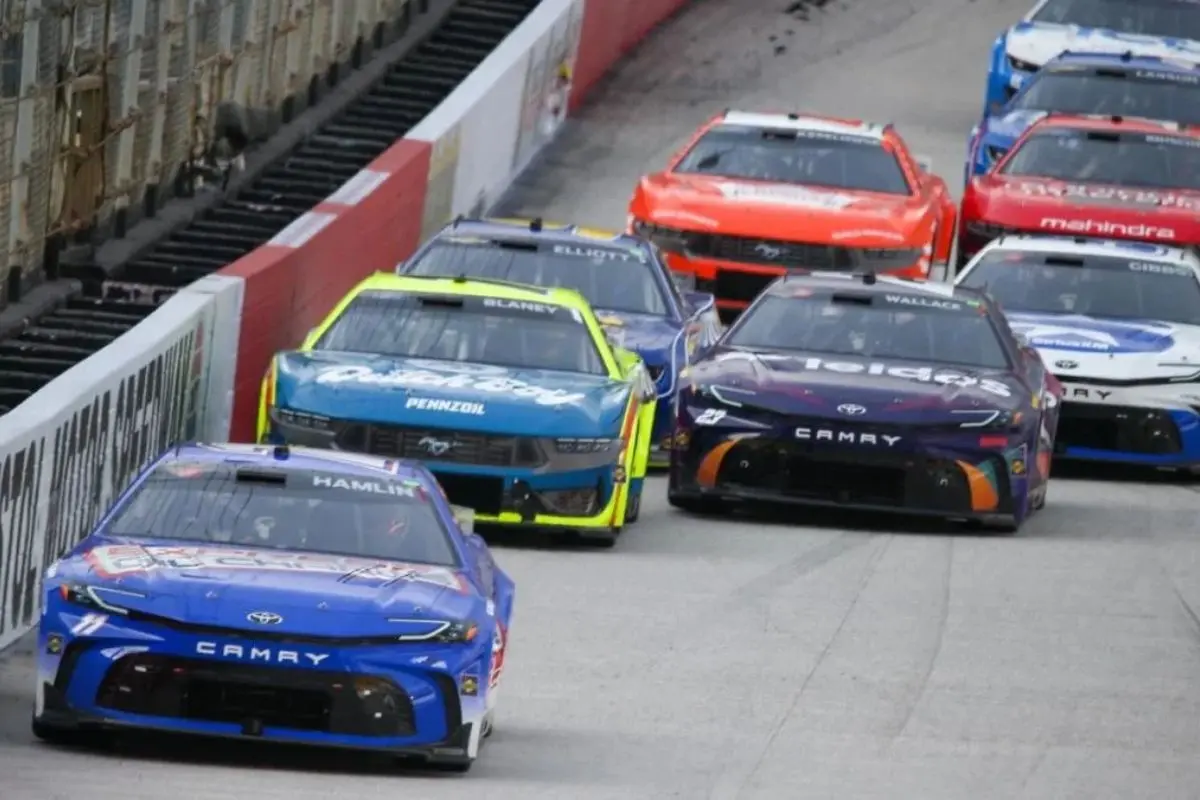The Time NASCAR Defeated the NFL: On November 21, 2004, NASCAR made history by attracting 9.9 million viewers for the season finale at Homestead-Miami Speedway, a notable achievement that highlighted its growing appeal. This record viewership contrasted sharply with a key NFL game, the Buffalo Bills vs. St. Louis Rams, exemplifying NASCAR’s potential to compete against traditional sports giants. The drama of the race, particularly Kurt Busch’s challenging expedition to victory, captivated audiences and underscored NASCAR’s unique blend of strategy and storytelling. This moment marked a cultural shift in American sports, signaling broader implications for future events and fan engagement in motorsports.
Key Highlights
- On November 21, 2004, NASCAR’s Ford 400 race attracted a historic 9.9 million viewers, showing its rising popularity in American sports.
- The 2004 Ford 400 featured intense competition among top drivers, culminating in Kurt Busch’s championship win despite early race challenges.
- NASCAR’s innovative Chase format created a thrilling atmosphere that engaged viewers, rivaling traditional sports like the NFL for audience attention.
- The race marked a significant milestone for NASCAR, demonstrating its potential to compete with the NFL in viewership ratings.
- This event indicated a cultural shift, as NASCAR began attracting diverse audiences and challenging the dominance of football in American sports.
The Context of November 21, 2004 – A Day of Tough Choices
On November 21, 2004, the landscape of American sports presented fans with an intriguing dilemma, highlighting the competitive nature of viewer engagement in contemporary broadcasting. On one side, the storied NFL displayed a crucial clash between the Buffalo Bills and the St. Louis Rams, rich with competitive fervor and fanfare.
Conversely, NASCAR tantalized audiences with the season finale of its inaugural Chase for the Nextel Cup at Homestead-Miami Speedway, a climax that promised unprecedented drama and significant stakes.
This confluence of events was not merely a scheduling conflict; it represented a broader narrative concerning the evolution of American sports viewership. Historically, the NFL has commanded a lion’s share of viewer attention, often regarded as the pinnacle of sports entertainment.
However, the allure of NASCAR’s finale, particularly given the context of its playoff format, positioned it as a formidable contender. The stakes were heightened as fans were aware that history could be made, with 9.9 million viewers ultimately tuning in to witness a race that would etch its significance into the annals of motorsport.
This day illuminated the shifting dynamics of sports broadcasting and audience loyalty. Fans were not only spectators but also active participants in a cultural dialogue, weighing their allegiance to traditional sports against the burgeoning excitement of NASCAR.
The record viewership served as a clarion call, revealing that NASCAR had firmly established itself as a competitive force capable of engaging the American public, even in the shadow of the NFL.
The NFL Game and the NASCAR Race – The Two Main Events
Two major sporting events unfolded simultaneously on November 21, 2004, each with its own narrative arc and significance. In Buffalo, the NFL presented a compelling matchup as the Bills faced off against the Rams. The Bills’ decisive 37-17 victory was emphasized by remarkable individual performances, including Terrence McGee’s electrifying 87-yard kickoff return and Willis McGahee’s relentless ground game. This win not only galvanized the home crowd but also breathed life into Buffalo’s playoff aspirations, highlighting the emotional stakes inherent in NFL competition.
Conversely, while the NFL game captured local attention, a different kind of drama unfolded at the Homestead-Miami Speedway, where NASCAR‘s inaugural “Chase for the Nextel Cup” reached a crucial moment. As the clock ticked down in Buffalo, millions of viewers were riveted by the tension of a championship battle that promised to redefine NASCAR’s competitive landscape. The race represented a climax of strategy, skill, and sheer resolve, drawing a record 9.9 million viewers—an unprecedented feat that signaled NASCAR’s ascension in the domain of American sports.
The contrast of these two events on that fateful day demonstrates the evolving dynamics of viewership in sports. While the NFL remained a formidable force, NASCAR’s growing popularity and its ability to capture a vast audience highlighted a shifting paradigm in American sports culture, one where the competition for attention was as fierce as the contests on the field and track.
The Drama of the 2004 Ford 400 and the Chase for the Nextel Cup
The 2004 Ford 400 at Homestead-Miami Speedway exemplified the exhilarating drama that defines NASCAR, as it marked the finale of a groundbreaking playoff format that had redefined the sport’s championship landscape. This crucial race was not merely a contest of speed but a high-stakes showdown that could alter legacies and careers.
With 26-year-old Kurt Busch leading the championship, he was on the verge of securing his initial title, yet his 18-point buffer was precarious. Jimmie Johnson, a formidable competitor, lurked just behind, while NASCAR titans Jeff Gordon and Dale Earnhardt Jr. were also within striking distance. The tension was palpable, as each driver’s strategy and grit would be tested in front of a captivated audience.
The significance of the 2004 Ford 400 lay in more than just the race itself; it was a symbol of NASCAR’s cutting-edge format designed to heighten competition and engagement. As the laps unfolded, the narrative intensified. Busch’s resolve to clinch the championship clashed with the determination of his challengers, particularly Gordon, who was just 21 points shy and keen to capitalize on any mistakes.
Ultimately, the race encapsulated the essence of motorsport—heartbreak and victory intertwined with the relentless pursuit of excellence. The Ford 400 became a defining moment not only for Busch but also for NASCAR, showing the sport’s ability to create compelling stories that resonate with millions, solidifying its place alongside other major sporting events.
Kurt Busch’s Near Disaster and Championship Victory
As the 2004 Ford 400 unfolded, the spotlight shifted to Kurt Busch, whose championship aspirations teetered on the brink of disaster. Early in the race, Busch encountered a critical situation when his car began to vibrate ominously, signaling a potential mechanical failure as his right front wheel threatened to loosen.
In a high-pressure moment, Busch navigated toward pit road with remarkable composure, narrowly averting a catastrophic collision with the pit wall—an act that seemed almost miraculous given the stakes.
“We feel like we dodged a huge, huge, devastating proposition that would have taken us out of this championship.”
“This championship is for Jimmy Fennig. But my heart is with Hendrick and everyone affected. It’s unbelievable.” – Kurt Busch
The urgency of the pit crew‘s response was palpable; they worked with a fervor that highlighted both the gravity of the situation and their commitment to Busch’s title quest. Their swift repairs allowed Busch to re-enter the race, a crucial moment that demonstrated the grit and resilience necessary in NASCAR’s most intense environments.
As the race progressed, the narrative shifted from mere competition to a tactical battle for points. While Greg Biffle seized the checkered flag, the real drama unfolded in the championship standings.
Despite finishing fifth, Busch’s performance was enough to secure a thin eight-point margin over Jimmie Johnson, marking one of the closest title battles in NASCAR’s modern history. This near-disaster metamorphosed into a reflection of perseverance, illustrating that victory in motorsports often resides not just in speed, but in the ability to navigate adversity with tactical poise.
A Historic Viewership and Kurt Busch’s Emotional Victory
NASCAR’s Ford 400 not only etched itself into the annals of racing history through Kurt Busch’s emotional victory, but it also emerged as a cultural phenomenon, drawing an unprecedented 9.9 million viewers. This remarkable achievement highlighted NASCAR’s growing appeal and its ability to captivate a diverse audience, even in direct competition with the NFL.
Several factors contributed to this historic viewership:
- Compelling Format: The new Chase format infused a winner-takes-all intensity that resonated with fans.
- Star Power: Iconic drivers like Jeff Gordon, Dale Earnhardt Jr., and Jimmie Johnson attracted casual viewers, enhancing the race’s allure.
- Dramatic Finale: The Homestead finale delivered unmatched excitement, keeping viewers engaged until the very last moment.
- Narrative Depth: The championship battle provided a rich tapestry of stories that transcended mere statistics and speed.
- Cultural Shift: NASCAR’s ability to draw in audiences typically loyal to football illustrated a notable shift in viewer engagement.
Kurt Busch’s victory marked not only a personal milestone—becoming the third-youngest champion in NASCAR history—but also a reflection of human resilience. As he reflected, “It’s an unbelievable deal. Many things have to fall into place to win a championship, and today we showed what it means to persevere.”
For one historic Sunday in November, NASCAR not only held its ground against the NFL but also emerged victorious, showcasing the sport’s unique blend of speed, skill, and storytelling ability.
News in Brief: The Time NASCAR Defeated the NFL
The remarkable viewership of 9.9 million for the 2004 Ford 400 emphasizes a crucial moment in sports history, showcasing NASCAR’s potential to rival the NFL’s dominance. The dramatic narrative of Kurt Busch’s near disaster culminating in a championship victory captivated audiences, illustrating the deep emotional engagement that motorsports can evoke. This event not only marked a notable milestone for NASCAR but also highlighted the evolving landscape of sports viewership, where traditional boundaries between leagues continue to blur.
ALSO READ: NASCAR Redefines Circuit of the Americas With a Bold New Track Layout for 2025



